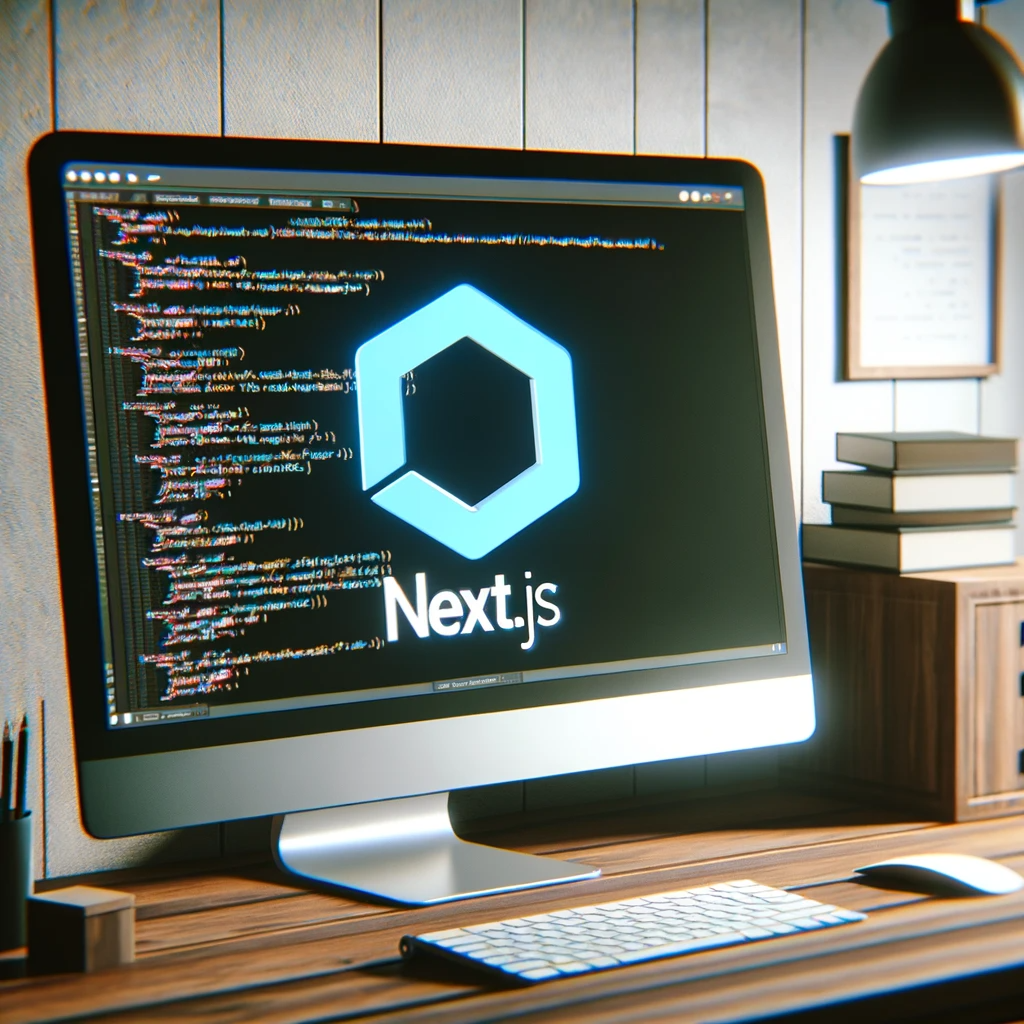When it comes to building modern, efficient web applications, Next.js stands out as a powerful framework. This guide focuses on a critical aspect for any tech team: how to effectively interview Next.js developers. The process involves more than just evaluating technical skills; it’s about uncovering a candidate’s ability to harness Next.js’s features to innovate and improve web development practices.
Hire the best developers in Latin America. Get a free quote today!
Contact Us Today!In this guide, we’ll provide a detailed roadmap for interviewing Next.js developers, highlighting the key areas to focus on and the essential questions to ask. Our aim is to help you identify developers who are not only technically proficient with Next.js but also a perfect match for your project’s needs and your company’s culture. Finding the right Next.js developer is a strategic step towards building powerful web solutions, and this guide is your companion in making those crucial hiring decisions.
What is Next.js?
Next.js is a popular open-source framework for building server-side rendered (SSR) React applications. It was created by the team at Vercel (formerly Zeit) and has gained significant traction in the web development community due to its simplicity, performance, and scalability.
Next.js combines the best of both worlds by allowing developers to build dynamic web applications with React while also providing server-side rendering capabilities. This means that the initial HTML content is rendered on the server and sent to the client, resulting in faster page load times and improved SEO.
Key Features of Next.js:
- Server-side rendering: Next.js enables developers to render the initial HTML on the server, which improves performance and allows search engines to crawl and index the content effectively.
- Automatic code splitting: Next.js automatically splits the JavaScript code into smaller chunks, allowing for faster page loads and better user experience.
- Hot module replacement: With Next.js, developers can make changes to their code and see the updates in real-time without having to manually refresh the page. This feature significantly speeds up the development process.
- CSS-in-JS support: Next.js provides built-in support for CSS-in-JS libraries like styled-components and CSS modules, making it easier to style components and manage CSS dependencies.
Identifying Your Next.js Developer Needs
When it comes to hiring a Next.js developer, it is essential to identify your specific needs and requirements before starting the interview process. This will help you find the right candidate who possesses the necessary skills and experience to successfully complete your project. In this section, we will discuss the types of Next.js developers and the importance of understanding your project scope for better hiring.
- Types of Next.js Developers
Next.js developers can be categorized based on their focus and skillset. Understanding these categories will help you determine the type of developer you need for your project:
a. Front-end focused: These developers specialize in building user interfaces and have a deep understanding of HTML, CSS, and JavaScript. They are proficient in creating responsive and visually appealing web pages using Next.js.
b. Full-stack capabilities: Full-stack Next.js developers possess both front-end and back-end development skills. They can handle server-side rendering, API integrations, and database management along with front-end development. If your project requires a comprehensive approach, hiring a full-stack Next.js developer might be the right choice.
- Experience Levels: Junior, Mid-level, and Senior Developers
Next.js developers come with varying levels of experience. Understanding the different experience levels will help you determine the level of expertise required for your project:
a. Junior developers: These developers have recently entered the industry and may have limited professional experience. They are eager to learn and grow, making them a good fit for smaller projects or as part of a team with more experienced developers.
b. Mid-level developers: Mid-level developers have gained some experience working on Next.js projects. They have a solid understanding of the framework and can handle moderately complex tasks independently. They are suitable for projects that require a certain level of expertise but may not need senior-level guidance.
c. Senior developers: Senior Next.js developers have extensive experience working with the framework. They can handle complex projects, provide technical leadership, and mentor other team members. If your project requires a high level of expertise and guidance, hiring a senior developer is recommended.
Mastering the Interview Process for Next.js Developers
The Interview Approach – Focus on the Framework
Hiring the right talent is crucial. However, when it comes to hiring for specific frameworks like Next.js, there’s a common misconception that needs addressing. It’s essential to understand that Next.js, while a powerful framework, is an extension of React. This leads us to an important hiring strategy: focus less on the framework and more on the underlying technology, in this case, React.js.
The Real Value of React Knowledge
- Framework vs. Core Technology: Next.js is built on React. Therefore, a developer proficient in React can quickly adapt to Next.js. This adaptability is a hallmark of a skilled developer. When interviewing candidates, prioritize React knowledge as a foundation.
- Quick Learning Curve: Next.js is designed to be user-friendly and efficient, streamlining many processes. A competent React developer can usually pick up Next.js within a week, thanks to its straightforward approach.
Conducting the Interview: Beyond Technical Trivia
- Practical Approach: Technical interviews often fall into the trap of resembling university exams, focusing on theoretical questions. To avoid this, adopt a more practical, discussion-based approach.
- Real-world Scenarios: Instead of asking abstract questions about JavaScript or specific coding challenges, engage candidates in discussions about real-world scenarios. For example, ask about their views on hooks, server-side rendering, or CSS management.
- Assessing Problem-Solving Skills: The way a candidate discusses these topics can reveal much about their problem-solving skills, creativity, and understanding of practical applications.
- Opinions and Preferences: Ask about their opinions and preferences in development. This can give insight into their experience, adaptability, and how they stay updated with current trends.
Looking for the Right Qualities
- Problem-Solving and Creativity: Look for candidates who demonstrate a creative approach to problem-solving. The ability to think outside the box is often more valuable than rote knowledge of a framework.
- Communication Skills: Pay attention to how candidates communicate their ideas. Effective communication is key in collaborative environments.
- Independence and Proactivity: Seek candidates who show a proactive attitude and the ability to work independently. This is crucial in fast-paced development settings.
Crafting the Job Description
Key Skills and Qualifications to Include
When drafting a job description for a Next.js developer, it’s crucial to clearly define the technical skills and qualifications that are essential for the role. Here are some key aspects to consider:
- Core Technical Skills:
- Proficiency in Next.js and its core principles.
- Strong understanding of React.js, as Next.js is built on top of it.
- Experience with server-side rendering and static site generation.
- Familiarity with RESTful APIs and GraphQL.
- Knowledge of modern HTML, CSS, and JavaScript.
- Additional Technical Skills:
- Experience with state management libraries (e.g., Redux, MobX).
- Familiarity with TypeScript.
- Understanding of responsive and adaptive design principles.
- Experience with testing frameworks (e.g., Jest, React Testing Library).
- Soft Skills:
- Strong problem-solving skills and a creative approach to tackling challenges.
- Excellent communication and teamwork abilities.
- A proactive attitude and the ability to work independently.
- Experience:
- Specify the level of experience required (Junior, Mid-level, Senior).
- Previous work on significant web development projects.
- Educational Background:
- Relevant degree or certifications (though practical experience can often be more telling).
Highlighting Specific Project Needs or Company Culture Aspects
In addition to technical skills, the job description should also reflect the specific needs of your project and the aspects of your company’s culture:
- Project-Specific Requirements:
- Mention any unique technical requirements of the project.
- Specify if the role demands particular expertise, like e-commerce platforms or web applications.
- Company Culture:
- Highlight elements of your company’s culture, such as teamwork, innovation, or work-life balance.
- Mention if remote work is supported or if the position requires relocation.
Understanding the Candidate’s Portfolio
What to Look for in Their Past Projects
A candidate’s portfolio is a window into their professional capabilities and style. Here’s what to look for:
- Relevance and Complexity:
- Projects that are similar to your own in terms of complexity and technology stack.
- Applications that demonstrate a good understanding of Next.js and its best practices.
- Design and Usability:
- Evidence of well-designed user interfaces and thoughtful user experiences.
- Responsiveness and performance of their web applications.
- Code Quality:
- If accessible, review their code for cleanliness, organization, and documentation.
Assessing Their Contribution in Team Projects
For candidates who have primarily worked in team settings, consider the following:
- Role Clarification:
- Discuss what specific roles and responsibilities the candidate had in each project.
- Ask for examples of problems they solved or features they implemented.
- Team Dynamics:
- Understand how they collaborated with other team members.
- Ask about any challenges they faced working in a team and how they overcame them.
Innovative Techniques to Interview Next.js Developers
When interviewing candidates for Next.js development roles, an innovative approach that focuses on real-world scenarios can be more revealing than traditional textbook questions. Developers often excel in practical environments, where they can showcase their problem-solving skills and creativity. Instead of asking them to define concepts or answer theoretical questions, it’s more effective to present them with an existing frontend application or a realistic project scenario. This method allows the candidate to demonstrate their practical knowledge and adaptability.
For instance, you might provide a sample project with specific challenges or requirements related to Next.js and ask the candidate to propose solutions or improvements. This approach not only evaluates their technical proficiency with the framework but also sheds light on how they tackle real-world problems, think critically, and apply their knowledge in a practical setting. It’s a strategy that aligns with the dynamic nature of web development, where theoretical knowledge must go hand in hand with practical application.
Real-World Next.js Assessment To Interview Developers
One of the most effective ways to evaluate your Next.js candidate is by using a real-world code example. This approach not only tests their technical proficiency but also their problem-solving skills in practical scenarios. In the following section, we’ll explore how to utilize a complex Next.js component, embedded with a subtle bug, as a strategic tool in your interviewing process.
import React, { useState, useEffect } from 'react';
const UserProfileUpdater = () => {
const [userProfile, setUserProfile] = useState({ name: '', email: '', profilePic: '' });
const [isLoading, setIsLoading] = useState(true);
useEffect(() => {
// Mock API call to fetch user data
fetch('/api/user')
.then(response => response.json())
.then(data => {
setUserProfile(data);
setIsLoading(false);
});
}, []);
const handleUpdate = () => {
setIsLoading(true);
// Mock API call to update user data
fetch('/api/user/update', {
method: 'POST',
headers: {
'Content-Type': 'application/json',
},
body: JSON.stringify(userProfile),
})
.then(response => response.json())
.then(data => {
setUserProfile(data);
setIsLoading(false);
});
};
if (isLoading) return <div>Loading...</div>;
return (
<div>
<input
type="text"
value={userProfile.name}
onChange={e => setUserProfile({ ...userProfile, name: e.target.value })}
/>
<input
type="email"
value={userProfile.email}
onChange={e => setUserProfile({ ...userProfile, email: e.target.value })}
/>
<input
type="file"
onChange={e => setUserProfile({ ...userProfile, profilePic: e.target.files[0] })}
/>
<button onClick={handleUpdate}>Update Profile</button>
</div>
);
};
export default UserProfileUpdater;
The Deliberate Bug:
The bug in this component is subtle yet significant. When the user updates their profile picture, the entire userProfile state should be updated, but the current code only updates the profilePic field while inadvertently resetting the other fields (name and email) to their initial state. This is a common mistake when updating state objects in React.
Interview Approach with Parallel Coding Assessment:
- Initial Review: Start by asking the candidate to review the code and explain its purpose and structure. This assesses their ability to understand and articulate code written by others.
- Identify the Bug: Without directly pointing out the bug, encourage the candidate to find any issues in the code. This tests their debugging skills and attention to detail.
- Discuss the Fix: Once they identify the bug, ask how they would fix it. This evaluates their problem-solving approach and their understanding of React’s state management.
- Implement the Fix: Have them implement their proposed solution. This not only tests their coding skills but also their ability to apply their knowledge in a practical scenario.
- Reflect on the Process: After the fix, discuss what strategies they used to identify and solve the problem. This provides insight into their thought process and approach to problem-solving.
- Extend the Scenario: Optionally, you can ask how they would improve or extend the component further, like adding form validation or enhancing the UI. This assesses their creativity and ability to think beyond the immediate problem.
This parallel coding assessment approach is effective in evaluating a candidate’s practical skills in real-world scenarios, focusing on their ability to identify, articulate, and solve problems in a Next.js environment.

As we’ve explored, the key to a successful interview for Next.js developers lies in practical, real-world assessments that go beyond theoretical knowledge. This approach not only gauges technical skills but also uncovers a candidate’s problem-solving abilities and adaptability in dynamic project environments.
If you’re looking for top-tier Next.js talent, consider our specialization in hiring nearshore LATAM Next.js developers.
Next Idea Tech‘s expertise in this area ensures that you get skilled professionals who can seamlessly integrate into your team and contribute effectively to your projects. Reach out to us to find the perfect Next.js developer for your next project.




